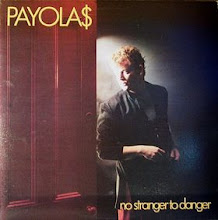 It is safe to say that the Broccoli family, co-owners and powers in charge of the James Bond franchise, have made some rather major missteps with their main cash cow over the years. These mistakes tend to involve the Bond films getting away from their roots as spy thrillers/action films, usually to the point where course corrective films which strip down the spectacle, villainous plots, and humour to reasonable levels are required. It is no mistake that the 2006 re-launch of the series, Casino Royale, followed the over-the-top insanity of Die Another Day (2002), or that the brilliant On Her Majesty’s Secret Service (1969) followed the fun-but-goofy You Only Live Twice (1967). A camp, larger than life fantasy Bond is simply not sustainable.
It is safe to say that the Broccoli family, co-owners and powers in charge of the James Bond franchise, have made some rather major missteps with their main cash cow over the years. These mistakes tend to involve the Bond films getting away from their roots as spy thrillers/action films, usually to the point where course corrective films which strip down the spectacle, villainous plots, and humour to reasonable levels are required. It is no mistake that the 2006 re-launch of the series, Casino Royale, followed the over-the-top insanity of Die Another Day (2002), or that the brilliant On Her Majesty’s Secret Service (1969) followed the fun-but-goofy You Only Live Twice (1967). A camp, larger than life fantasy Bond is simply not sustainable.However, no film in the series illustrates just how wrong a Bond film can go more than Moonraker (Gilbert 1979), a film that blatantly tried to cash in on the surprise success of the 1977 film Star Wars (Lucas). The film follows Bond (Roger Moore in his fourth outing) as he attempts to stop madman Drax (Michael Lonsdale) from destroying all life on Earth. Drax’s goal is to eventually repopulate the planet with select human specimens, who are being safely kept in a hidden space station. Thus, after globe trotting around the world as usual for two thirds of the film, Bond heads into space, along with American CIA agent Holly Goodhead (Lois Chiles) to stop Drax and his mad plan.
If the idea of Bond in space sounds like a bad idea, it is. While Ian Fleming’s famous creation has always been a fantasy, it is a fantasy set within a heightened reality, a sexed-up world of international espionage and assassination. A Bond film that responded to mankind’s move into the stars during or immediately after the initial space race could have been made into a workable film, as long as the filmmakers understood that it was the geopolitical ramifications of going into space that would drive the story. Unfortunately, the new frontier of outer space in Moonraker serves as little more than a back drop for spectacle: American soldiers are shown battling Drax’s men with lasers in outer space itself, while Bond and Goodhead's journey to Drax's space station is reminiscent of the notoriously overlong reintroduction of the U.S.S. Enterprise in Star Trek: The Motion Picture (1979).
The irony, however, is that in terms of visual spectacle and inventiveness, the space material is the best in the film. Director Lewis Gilbert, the special effects crew, and director of photography Jean Tournier clearly went the extra mile to make sure that these sequences were magnificent, and they are more than a match for the visuals featured in George Lucas’ space opera. The space based shoot out between Drax’s men and the US astronauts/military is simply spectacular, while the model work on both the space station and space ships is top of the line. However, as great as this material is, its inclusion in a Bond film is jarring, undercutting the impact that the spectacle would otherwise have. It would have simply been better had producer Albert Broccoli created his own space set film to capture the audience's desire for space adventures, rather than turn the Bond franchise into something it is not.
The side effect of all the effort seemingly being spent on the space material in the film is that the more typically Bond-ian elements are rather bland and uninspired. Everything leading up to the third act is pretty much by the book, with little in the way of inventive variation. The scenery looks beautiful, and the stunt work is professional, but none of it has any of the punch that it should have. The only sequence which stands out is one set during Carnival in Rio de Janeiro, but its presence only serves to highlight how pedestrian the rest of the film is before it goes off the rails as an electric light show.
None of this is helped by star Moore, who by this point simply does not look like he gives a damn. More than any other of his Bond films, Moore seems to be playing the role for laughs, undermining even the minimal tension generated in the film. Worse, unlike Sean Connery, Timothy Dalton, or Pierce Brosnan, Moore simply aged poorly, making it hard to continue buying him as a believable as 007. Naturally, Moore carried on playing Bond in a further three films after Moonraker.
There are one or two saving graces in the film, thankfully. While Lois Chiles is saddled with the worst name for a Bond girl prior to Denise Richards' Christmas Jones in The World is Not Enough (1999), she manages to bring a level of class missing from most of the rest of the film in her role as Holly Goodhead. Desmond Llewelyn and Bernard Lee are as reliable as ever as Q and M respectively, while Lonsdale does make for a rather creepy villain. The same cannot be said of Richard Kiel's Jaws, who shows up to drag the threat level of the villains down a few levels, just as he did in the immediate predecessor to Moonraker, The Spy Who Loved Me (1977).
The real saving grace of the film is the music of composer John Barry, who in Moonraker provides one of his best scores of the entire series. Entire scenes are carried by Barry's music alone, and once Bond and Goodhead launch into space, the score has a haunting beauty that is reminiscent to Barry's work in The Black Hole, also released in 1979.
Thankfully, Barry's score is available on disc apart from the film itself, allowing viewers to skip Moonraker all together. Hard core Bond fans will no doubt already have seen the film, or if not, will subject themselves to it regardless of any negative reaction to the film, including this review. For casual fans, pick up the score on itunes, crank it up, and read Fleming's original novel upon which Moonraker is barely based. It is a better use of your time, and will be a far more enjoyable experience.


You know this movie gets a really bad rap. And I admit, it's not a real highlight of the franchise. But if you look at it in the perspective of the time, you see why it was made and why it was the one of the largest grossing Bond films in the Moore cannon.
ReplyDeleteI admit the first couple times I watched it, I really disliked it. But in all honesty "Moonraker" is about as close to a parody of Bond as the MGM crew were willing to go for. And in many ways it's what the audience in the '70s wanted. I also think that the director had a lot to do with this, turning Bond so far into a comic book character that he actually becomes the parody.
Once the 80s hit we get Glenn as the new director and he pushes things back toward the action/thriller edge of the spectrum with "For Your Eyes Only".
But I think "Moonraker" can and should be enjoyed on its own terms. Consider it the only official parody that MGM performed with Bond and it's not bad. It's certainly better than the duller than dirt films of the early 70s. I'm sorry but not even Connery could save the dreary dismal doldrum that is "Diamonds are Forever", what I believe is one of the worst of the official Bond flicks.
Ah, see, I humbly disagree with your comment that the space battle scenes rival Star Wars. I think this is some of the clunkiest special effects work in the series. Everything about the film is just so boring, except for the score. The title song is easily one of my favourites.
ReplyDelete